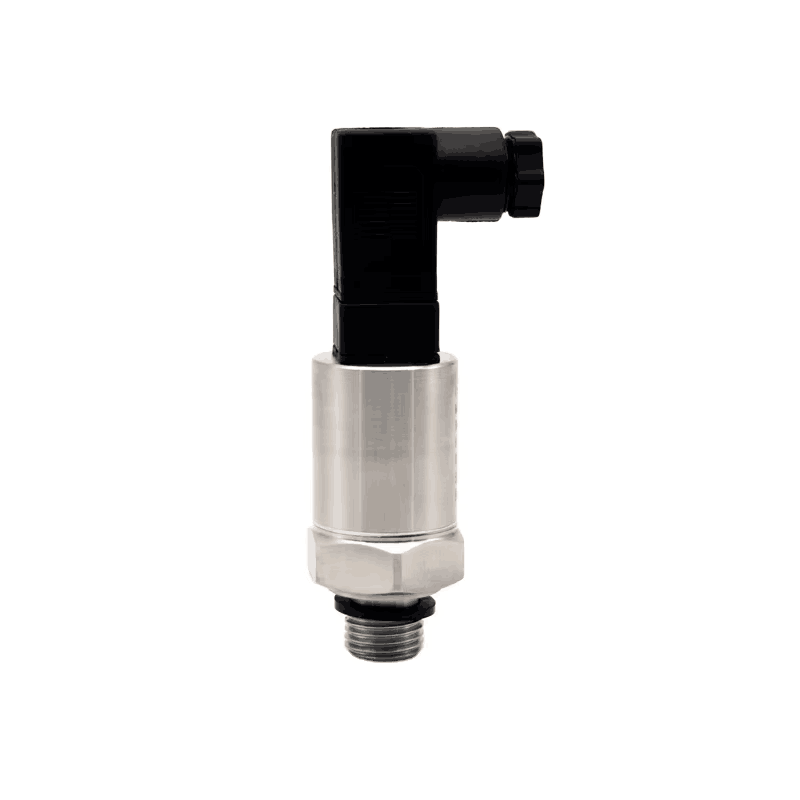1. Introduction to Pressure Transmitters
Devices capable of detecting pressure values and providing remote transmission signals are collectively referred to as pressure transmitters, which are commonly used as sensors in industrial automation and process control to measure the pressure of gases or liquids and convert this pressure value into measurable, transmittable electrical signals.These electrical signals are usually standard current or voltage signals, such as 4-20mA current signals or 0-10V/0-5V voltage signals, in order to facilitate remote transmission, display, recording or control in industrial automation, process control, monitoring and measurement systems.It can meet the requirements of centralized detection and control of automation systems and is widely used in industrial production.

2. Components of a Pressure Transmitter
Pressure transmitter usually consists of a pressure sensitive element (such as strain gauge, capacitive diaphragm, piezoresistive chip, etc.) and a signal processing circuit.When the measured medium acts on the pressure-sensitive element, it will cause some kind of physical change of the element (e.g. resistance change, capacitance change, resonance frequency change, etc.), and this kind of change is then converted into an electrical signal.Signal processing circuit is responsible for this electrical signal amplification, linearization, temperature compensation and other processing, in order to output a stable, accurate pressure value.
3. Types of Pressure Transmitter
Pressure transmitters have a variety of structural forms, according to the working principle of classification of strain, piezoresistive, capacitive, piezoelectric, vibration frequency type and so on.The following is a brief introduction to several commonly used pressure transmitters.
Strain gauge pressure transmitter has a large measuring range, the measured pressure can be up to several hundred megapascals, and has good dynamic performance, suitable for rapid changes in pressure measurement.However, there are more obvious temperature drift and time drift, this instrument is more often used for general requirements of dynamic pressure detection; piezoresistive pressure transmitter is based on the principle of piezoresistive effect of manufacturing, its pressure-sensitive element is in the semiconductor material on the substrate using the integrated circuit process made of diffusion resistor, when it is subjected to external forces, diffusion resistance resistance due to the change in resistivity and change.

The main features of piezoresistive pressure transmitter are small size and simple structure.The sensitivity coefficient of diffusion resistor is dozens of times that of metal strain gauges, which can directly measure small pressure changes.In addition, piezoresistive pressure transmitter also has a good dynamic response, hysteresis is small, can be used to measure several kilohertz or even higher pulsating pressure.This is a relatively rapid development, the application of a very wide range of pressure transmitters.
Capacitive pressure transmitter adopts differential capacitance as the detecting element, mainly including measurement and conversion amplification two parts.The main use of the center of the pressure-sensitive diaphragm and the left and right two arc capacitor pole plate to convert the differential signal into a differential capacitance signal, the center of the pressure-sensitive diaphragm and the left and right two arc capacitor pole plate to form a capacitance.
The differential pressure causes the central pressure sensing diaphragm to produce displacement, so that the distance between the movable electrode and the left and right fixed electrodes is no longer equal, forming a differential capacitor, and the relative change value of the differential capacitor is linear with the differential pressure. Due to the mechanical transmission mechanism without lever inside the whole capacitive differential pressure transmitter, it has the characteristics of high precision, high stability and high reliability, and its accuracy level can reach 0.2, which is a kind of transmitter commonly used in industry.
The piezoelectric pressure transmitter uses the piezoelectric effect of the piezoelectric material to convert the measured pressure into an electrical signal. It is a commonly used sensor in dynamic pressure detection, and is not suitable for measuring slowly changing pressure and static pressure.
Vibrating frequency pressure transmitter using the resonant frequency of the pressure-sensing element itself and the relationship between pressure, by measuring the change in frequency signal to detect pressure.These sensors have vibrating cylinder, vibrating string, vibrating membrane, quartz resonance and other forms.This instrument is small in size, output frequency signal, good repeatability, vibration resistance; high precision, suitable for gas measurement.

4. Applications of Pressure Transmitter
Pressure transmitters are widely used in various industrial fields, such as petroleum, chemical industry, metallurgy, electric power, pharmaceuticals, water treatment, etc. They are used to measure and control the pressure of various fluids to ensure the stability and safety of the process.They can measure various ranges from tiny pressure to very high pressure, and are characterized by high accuracy, high stability, high reliability and long life.
In addition, according to the different measurement principles and application scenarios, pressure transmitters can be divided into various types, such as differential pressure transmitters (used to measure the difference between two pressures), absolute pressure transmitters (used to measure the absolute pressure relative to a vacuum), gauge pressure transmitters (used to measure the pressure relative to the atmospheric pressure) and so on.

